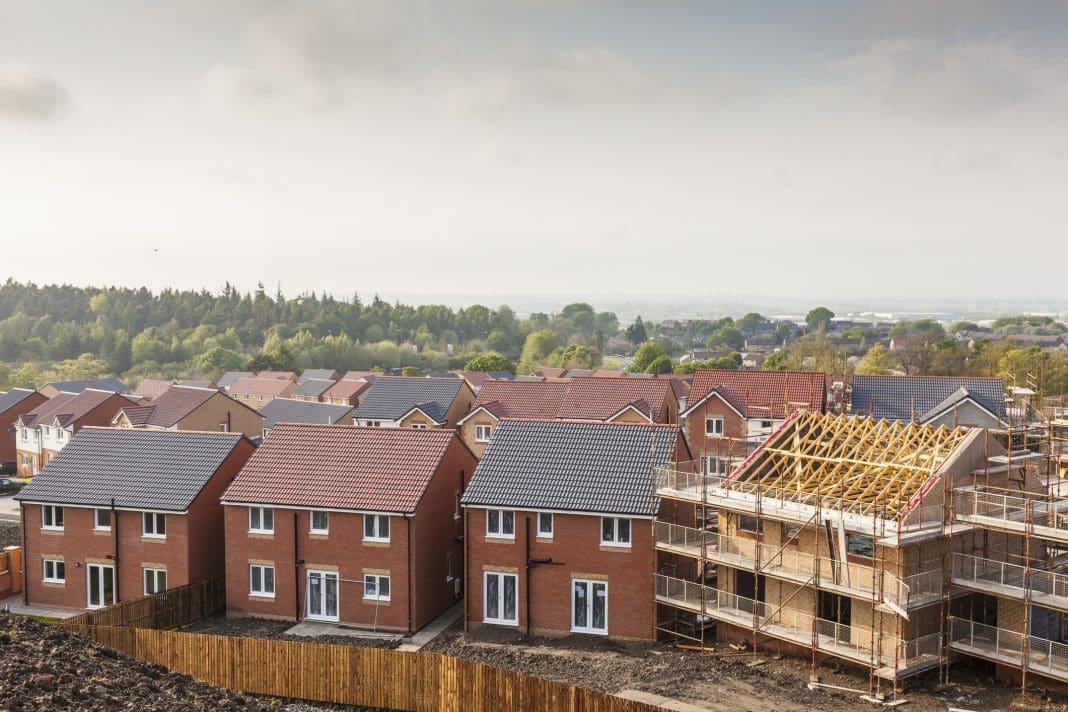Housebuilding fell down to 39.2 in the most recent construction PMIs, as cutbacks to residential projects and unfavourable market conditions left the industry sluggish
November PMI data showed a construction industry on the decline, with housebuilding, employment and new work all down.
The headline S&P Global / CIPS UK Construction Purchasing Managers’ Index registered 45.5 in November, a slight decrease from October’s 45.6 and sitting below the 50.0 no change value for the third consecutive month.
These figures were the second-lowest since May 2020, signalling a significant reduction in total industry activity.
Continued high borrowing costs impeded development
Commercial building kept stable at 48.1, but both civil engineering and housebuilding were down again, at 43.5 and 39.2, respectively.
Survey feedback from construction firms suggested that poor domestic economic conditions and client hesitation on key decisions regarding investment spending had led to the poor performance.
“The cost of lending on construction projects has gone through the metaphorical roof,” said Brendan Sharkey, construction and real estate specialist at MHA. “The ability to borrow or refinance is currently very challenging with the rates much higher than they were two years ago. In contrast, companies with cash reserves are very happy to take the high rates of deposit interest available rather than speculative development which is a poor state of affairs given the housing shortage.”
“Confidence in the market is generally very low, and the reality is that the next few months are not going to be any easier.”
Total new orders decreased for the fourth month in a row, albeit at the slowest pace since
August, suggesting a lack of new work to replace completed projects.
November input buying decreased again, reflecting reduced workloads and fewer project starts. Some firms also commented on destocking efforts in response to improved supply conditions, which led to lower input buying in November.
Costs and delays continued to drop
In more positive news, purchasing costs saw the steepest reduction in purchasing costs across the sector in nearly 15 years. This was a combination of lower raw material prices and greater competition between suppliers.
Average lead times between vendors were shortened for the ninth consecutive month, although some noted transportation delays and spare capacity as mitigating factors.
Housebuilding will continue to be a political topic
Brendan Sharkey continued: “Pipelines are looking good on paper, particularly for the second half of the year, but with the economy the way it is, and interest rates are set to continue as they are, will these projects get deferred? The lack of announcements on housing or infrastructure in the Autumn Statement has not helped sector sentiment.
“Housing is going to be a big issue in the upcoming election campaign, and there’s going to be an element of mothballing until then, so the industry is going to have to second guess what the government is going to do. Housebuilders will not build if there is no market.”
Fraser Johns, finance director at Beard, said: “Despite some resilience in the commercial sector, the headlines will continue to focus on house building remaining the weakest performing sector, which continues to have a heavy impact on construction output as a whole. Higher borrowing costs remain a real barrier for this sector, and along with tighter access to credit, is also having an impact in other areas of construction.
“While it seems the Bank of England has now paused its rate rising agenda, the news of rates staying “higher for longer” and general uncertainty in the UK economy could signal further hesitance from both potential homeowners and clients next year too.
“As we head into the new year, it’s highly likely that both tendering and cost plans will continue to face considerable pressure. As a result, we are actively encouraging clients to explore a more measured approach to procurement. Instead of going straight to tender, clients can engage with a contractor earlier and before planning, working collaboratively to save time and costs in the process.”

















